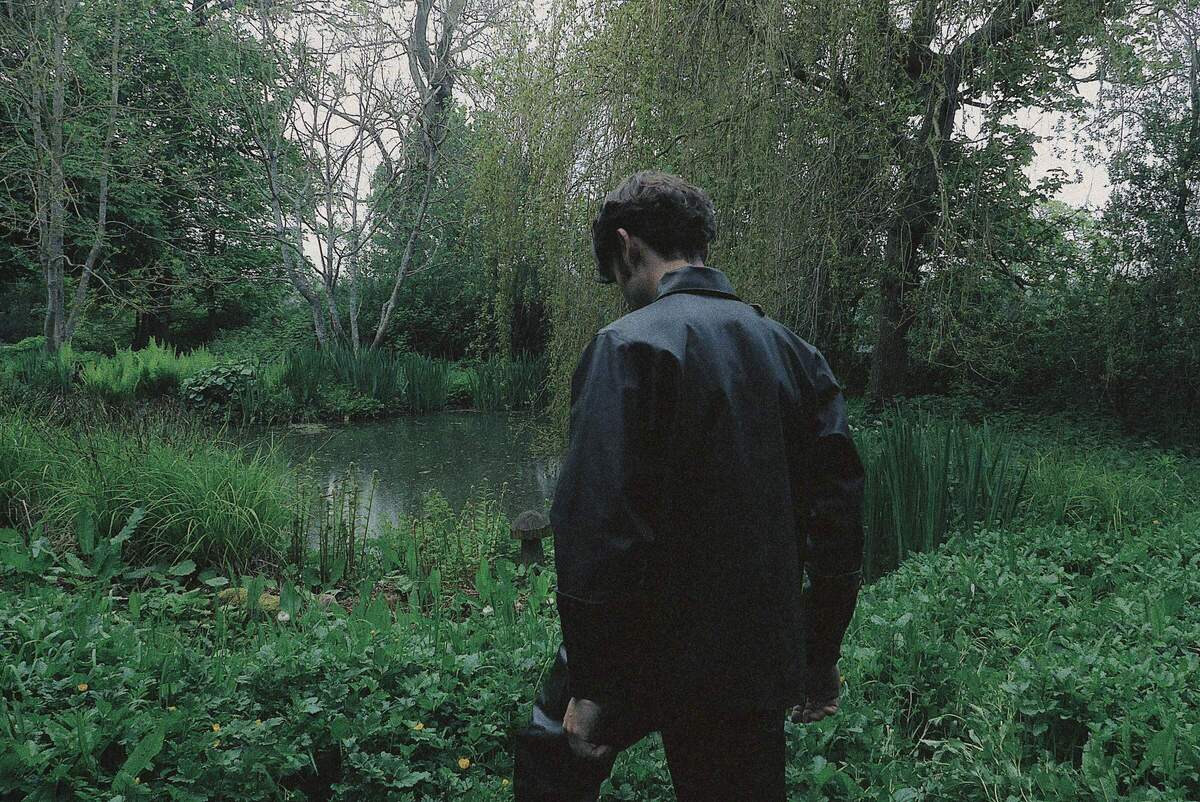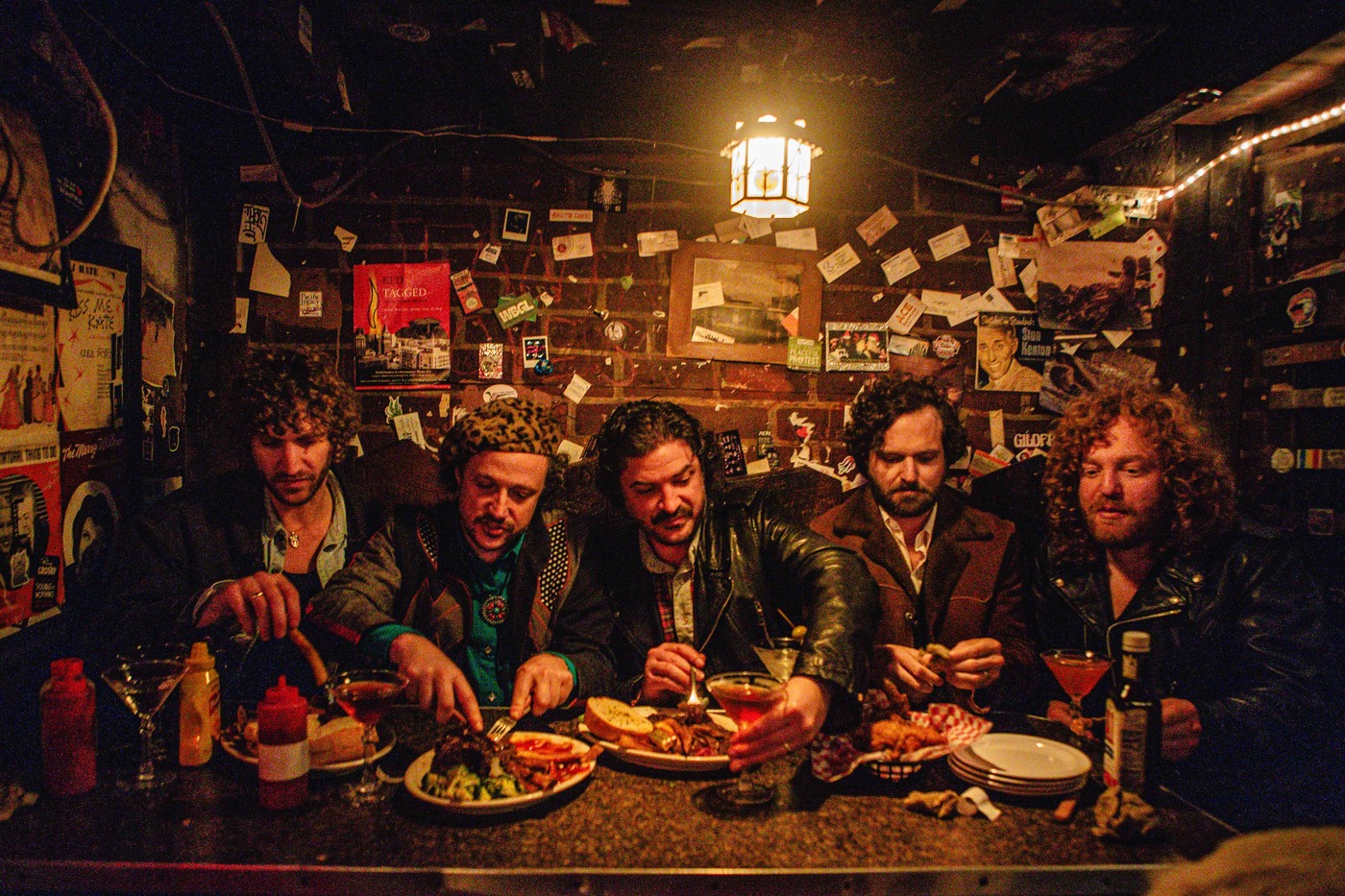Smote | Interview | New Album, ‘A Grand Stream’
Smote’s storming back with ‘A Grand Stream,’ set to drop on August 23, 2024, courtesy of Rocket Recordings. To accompany its release, we are exclusively sharing ‘Sitting Stone Pt. 2,’ a monster track from the album.
The farmhouse, man—isolated, dripping with that raw rural vibe—was like this creative pressure cooker that just lit the fuse on the whole album. No distractions, no one breathing down your neck, just you, the morning fog, and the creaks of an old barn setting the stage for something real. So what do you do? You dive deep, recording into the dead of night, free from the ego traps that usually screw with the process, letting the isolation mold every note into this 70-minute beast that refuses to be just a collection of tracks. It’s dark, it’s brooding, and it’s probably the heaviest thing Smote has ever unleashed, a new chapter in a story that keeps getting grittier. Repetition? It’s not just a technique, it’s a mantra, pulling listeners into this hypnotic loop until they’re grinning like maniacs in the middle of a 10-minute riff. And the future? Who knows—maybe film scores, maybe taking on Scandinavia, but you can bet whatever comes next will be just as raw and unfiltered.
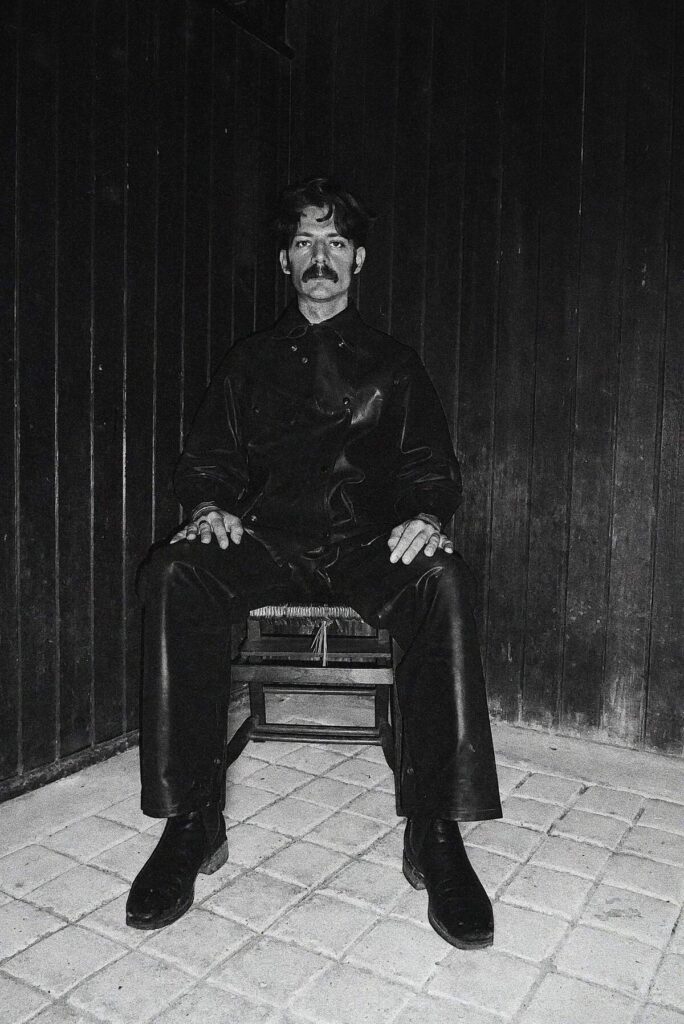
“I’ll always try to keep evolving the project”
‘A Grand Stream’ evokes an intriguing sense of place and emotion. Can you delve into how the specific environment of the Kelso farmhouse and its surroundings influenced the album’s creation and its sonic textures?
It wasn’t something that registered with me at the time—the prospect of the physical environment influencing the record so much. It was only when it was finished that I realized all of the sounds on it reminded me of being there. It’s a pleasant place, but there can be an edge to it when you’re so isolated. You don’t necessarily know what’s making all those creaking noises in the barns at night or what/who snapped the twig in the bushes.
There’s also a tremendous sense of space. I really hope I managed to convey this onto the record.
Sitting by the river with Rob, soaking in those moments of pure happiness—how did those serene experiences translate into the darker, more foreboding sounds of the album?
I’m not quite sure, to be honest. Even though the album sounds quite dark, it doesn’t personally make me feel that way. The place had a strong feeling about it, and I was full of energy when I was recording it. So maybe that’s why it went that way—I wanted to make some tracks with an unmistakable atmosphere about them. Foreboding to one person’s ear isn’t necessarily foreboding to another.
You’ve mentioned the DIY nature of this album’s production. Can you share some of the most unconventional or “whacky” recording techniques you employed?
Well, I’ve got access to around four microphones for a start, ha. Which seems insane considering the scale at which modern studios record nowadays. The same overhead I used for the drums was used for the guitars too, as well as percussion, flute, and vocals. It works for me this way, keeping it simple.
“The constant clash of traditional acoustic instrumentation and modern technology is also a priceless tool”
‘Coming Out Of A Hedge Backwards’ and ‘Sitting Stone Part 1’ both possess distinct ambiances. How do you approach balancing folk-tinged ceremonial vibes with the eerie and ethereal dimensions in your music?
That’s not really something I actively seek out—a happy accident, I suppose. I suppose it would be 50% notation and 50% production. There’s nothing like a good semitone to add a feeling of suspense. Reverb is also an extremely vast tool. It says it all really that different reverbs are in reference to a respective physical place that they emulate, so that gives you many different environments to explore.
The constant clash of traditional acoustic instrumentation and modern technology is also a priceless tool, sometimes using one to emulate the other!
The track ‘Chantry’ has been described as meditative, drawing comparisons to Kali Malone’s ‘Does Spring Hide Its Joy.’ What kind of headspace were you in when creating this track?
Well, I absolutely LOVE bagpipes. Frequency modulation is really interesting too, especially considering it happens both acoustically and electronically. So I did some digging and found the apparent frequencies and sound waves that a bagpipe makes, altered it slightly, and tried my best to replicate that sound with tuned oscillators. The achievement of creating such a heavy feeling from one drawn-out sound, much like bagpipes do, is so interesting to me.
Your influences for this album include Anna Von Hausswolf and Maria W. Horn, who blend traditional and contemporary instrumentation. How do you see this fusion affecting the overall weight and intensity of your sound?
Big riffs are great, but the aspect of adding some traditional instrumentation into the mix can bring a grander sense of scale, I think. Even something as simple as a tambourine can turn a purely audio-based piece into something that evokes some very specific imagery—it creates a bigger world, I suppose.
Smote has always charted its own course in the psych rock landscape. I would love it if you could take some time and discuss the previous releases… a few sentences about the creation of each would be much appreciated.
Yeah, sure. So ‘Drommon’ was pretty much entirely improvised, layer by layer, and mostly first takes on everything. It’s a real loose record as a whole, but the energy that can bring is great. ‘Genog’ was slightly different. I started considering concepts a little more, and I had specific ideas for tracks on there that I wanted to sound a certain way—the sort of rural/trad-agriculture themes started coming into fruition on that one, themes that are still present on ‘A Grand Stream.’
The farmhouse setting – isolated yet rich with rural intensity – must have fostered a unique creative atmosphere. How did the isolation affect your creative process, both positively and negatively?
It was all positive, really. I had total freedom while I was there to create how I wanted, within a timescale that I wanted. I had little jobs around the farm to do during the day, and I would spend the evenings and mornings recording. It’s nice having no one around during the recording process; ego comes into play a lot less, and I personally suffer from less second-guessing, so it seems to come out a lot easier.
The album spans over 70 minutes, making it a true opus. How do you maintain narrative and emotional coherence across such a lengthy piece of work?
It is indeed a long one, haha. It was a challenge, I won’t lie, but I’m pleased with the end result. I think recording it all in quick succession helps a lot, thinking about how one song can lead into the next, and also appreciating the whole record as one piece of music rather than a collection of songs is a pretty big one for me. I much prefer listening to albums in full, so that’s how I make them. It’s not about big singles and pop songs. I’m also REALLY into the same themes that the album portrays, so it makes it a lot easier to dive into them and stay there for a while.
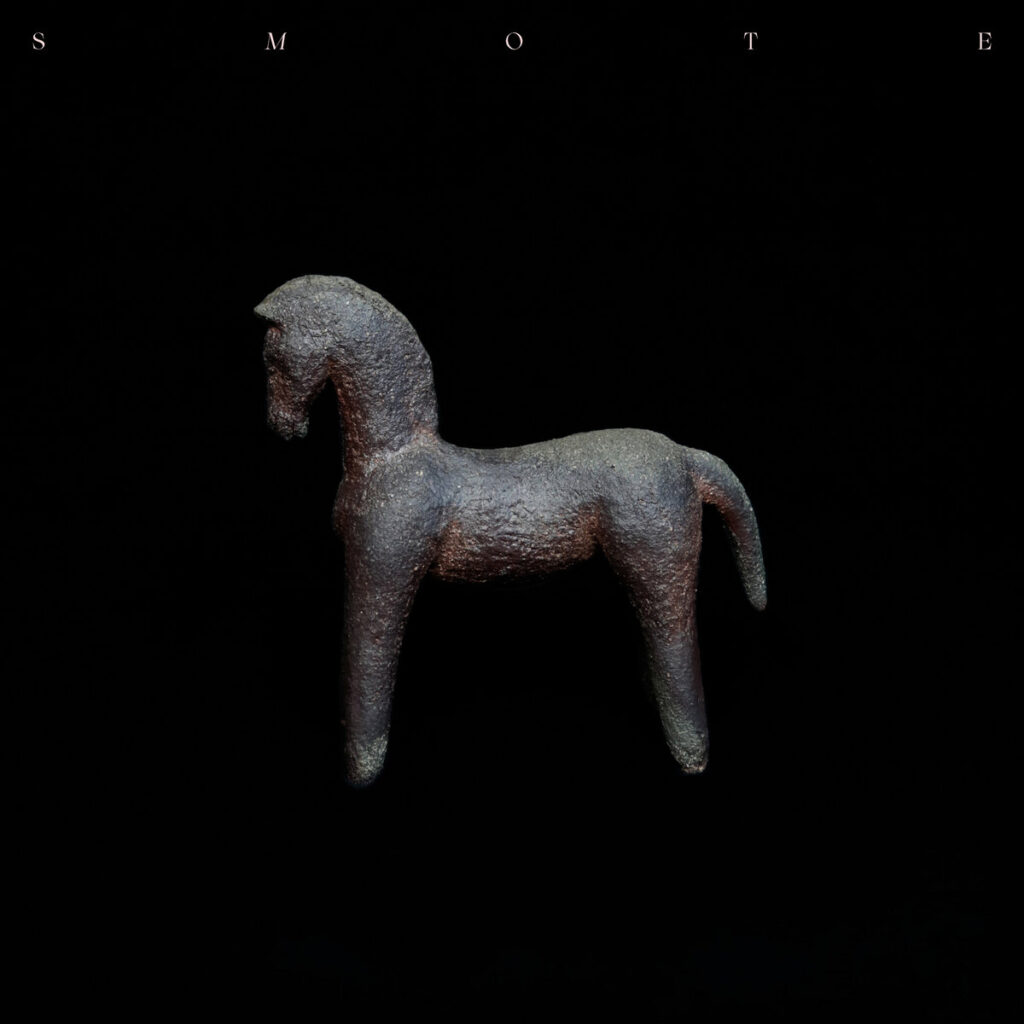
With this album being described as both the darkest and most foreboding work you’ve done, do you see this as a new direction for Smote?
I’ll always try to keep evolving the project. The heavy stuff has been very satisfying lately. The energy and catharsis are such a good feeling, particularly live. So yeah, I’ll keep expanding on it and see how far we can take it!
How do you see the role of repetition in your music?
Repetition is the main tool. It’s a way to create so many different kinds of tension, release, dread, etc. It’s funny sometimes too. It’s always great seeing an audience member smiling when we’re neck-deep into a 10-minute repetition section.
What are some future plans for you?
Well, I’m always recording, so there’s that to look forward to. Who knows what will come next, though. I would like to work on some film scoring at some point down the line.
We’re going to keep reaching further afield with our tour schedules too. Hopefully, we’ll see some nice parts of Scandinavia next year.
Let’s end this interview with some of your favorite albums.
Yes! Here’s a few:
Alexis Degrenier – ‘La Mort Aura Tes Yeux’
Maria W. Horn – ‘Funeral Folk’
One Leg One Eye – ‘And the Black Worm Takes Me’
ØXN – ‘CYRM’
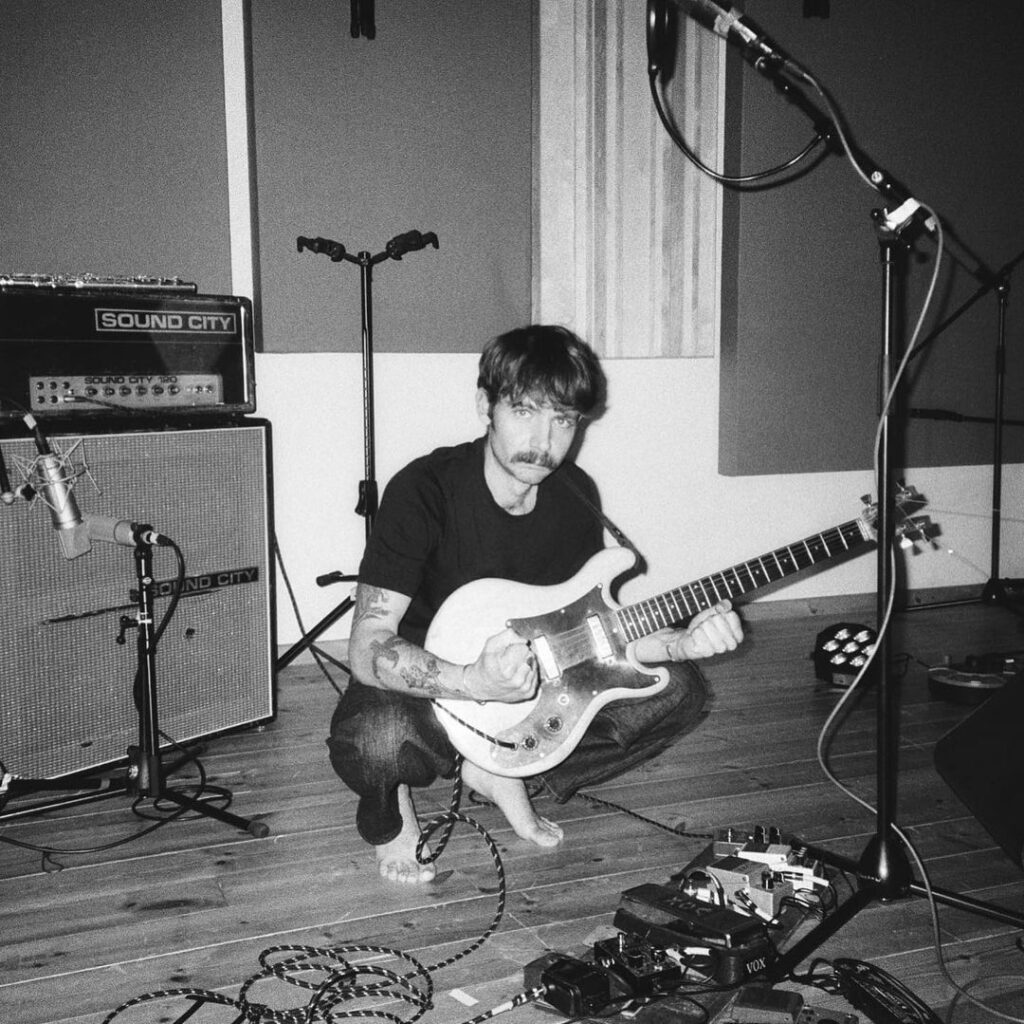
Thank you. The last word is yours.
Kiss a frog, touch some moss, drink some pond water. Do what you gotta do.
Klemen Breznikar
Smote Instagram / Bandcamp
Rocket Recordings Official Website / Facebook / Instagram / Twitter / Bandcamp / SoundCloud

